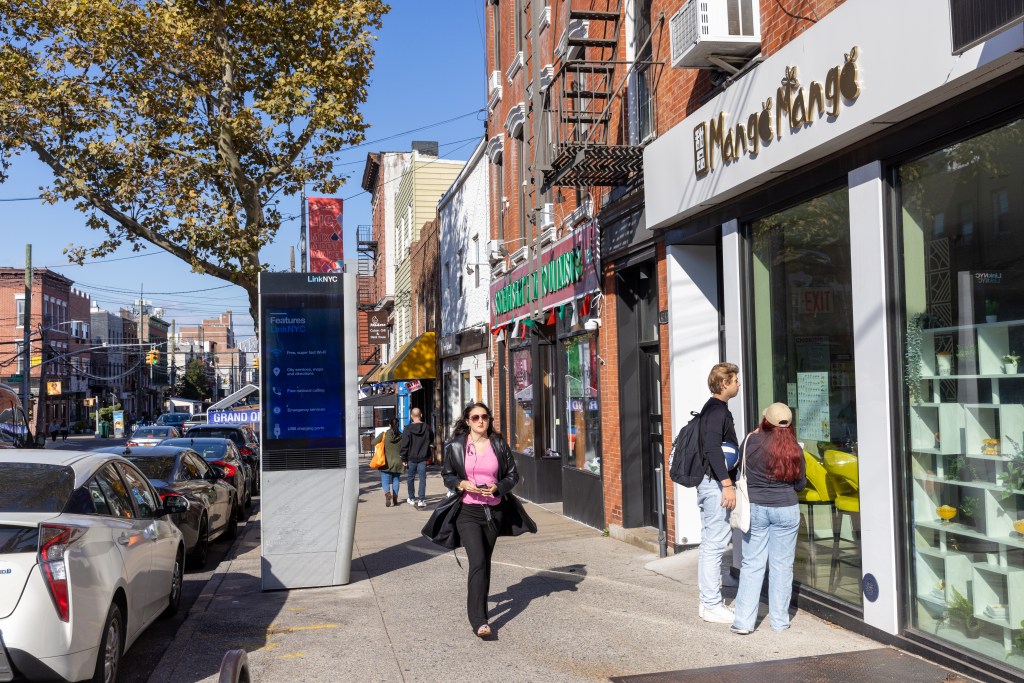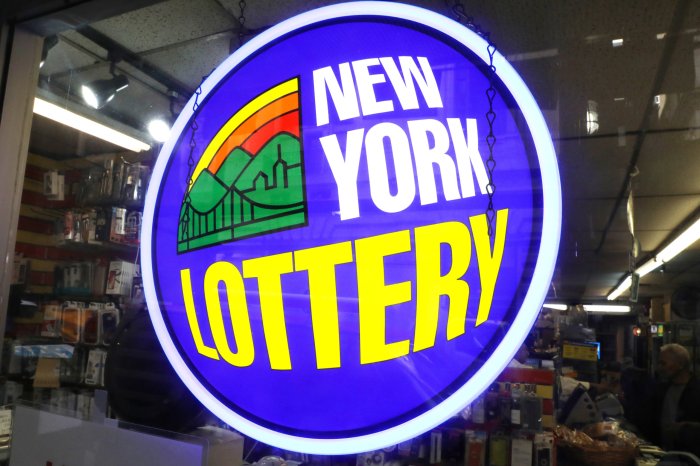By Arthur S. Leonard
Gay City News
Introducing a significant new chapter into a two-decade legal saga dating back to the Giuliani administration, the Manhattan-based First Department of the New York State Appellate Division has ruled that the city’s controversial 1995 adult uses zoning ordinance, as amended in 2001, violates the U.S. Constitution’s First Amendment free speech guarantee.
In a July 21 ruling, written by Justice Barbara R. Kapnick, the 3-2 majority affirmed a 2012 ruling by the late New York County Supreme Court Justice Louis B. York and permanently enjoined the city from enforcing the amendments.
The panel has tossed a political hot potato to the de Blasio administration, which must decide whether to ask the Court of Appeals, state’s highest bench, to review the ruling.
Origins of City’s Adult Zoning Regulations
Prior to 1995, New York City made no distinction between sexually-oriented adult businesses and other enterprises under its zoning ordinances. Adult businesses could locate anywhere in the city, and some residents and officials thought there were too many such businesses concentrated in prime commercial and residential locations.
In 1993, responding to U.S. Supreme Court rulings that zoning restrictions on adult businesses could be imposed if local governments showed that their presence caused undesirable “secondary effects” — such as increased crime, decreased property values, reduced commercial activities and erosion of community character — the city’s Department of City Planning “began a comprehensive assessment of the impact of adult establishments on the quality of urban life,” reporting a year later it had found such negative effects.
The city, in 1995, amended its zoning regulations to ban “adult uses” from all residential zones and most commercial and manufacturing districts. In areas where adult businesses were not completely banned, they were allowed no closer than 500 feet from a church, school or day care center. That formula would have consigned adult businesses to remote areas of the city where they would be unlikely to attract enough customers to survive.
Defining an “adult establishment” was the key to enforcement. In highly stilted wording aimed at avoiding sexually charged language, the city legislation identified adult businesses as those where the live, video, or printed depiction of “specified sexual activities” or “specified anatomical areas” made up a “substantial portion” of either space and/ or inventory.
Sexually oriented businesses wishing to escape the label of “adult business” complained that the definition was so vague they were uncertain as to how to comply with the new restrictions. The city responded by adopting a “guideline” specifying that the phrase “substantial portion” meant that any business with “at least 40 percent” of its accessible floor area or stock used for “adult” purposes qualified as an adult establishment.
Many businesses then redesigned their premises to reduce the portion devoted to sexually oriented goods or activities to under 40 percent, though many others just went out of business, drastically reducing the number of adult businesses in the city and leading to the virtual disappearance of porn theaters. When the city instituted proceedings to go after adult businesses in residential and prime commercial areas, it discovered that many were successful in showing technical compliance with the 40 percent threshold.
The Giuliani administration then came up with the “sham compliance” theory, arguing that whatever the proportion of inventory or space devoted to adult uses, many businesses were in fact deriving most of their revenue from them. In 1998, the city began bringing “nuisance” lawsuits against such businesses, attempting to get them shut down.
Court challenges to the zoning regulations emerged from the time they were first enacted in 1995. After some initial losses, Les Hommes, a gay bookstore on the Upper West Side in Manhattan, prevailed at the Court of Appeals, which ordered that the city could not prevail on the “sham compliance theory,” but must enforce the regulations as written, regardless of how much revenue any portion of the inventory generated.
“Either the stock is available or accessible or it is not,” the court wrote. “Either the appropriate amount of square footage is dedicated to non-adult uses or it is not.”
Second Round of Regulations in 2001
That ruling set the stage for the 2001 amendments at issue in the Appellate Division’s most recent ruling. Now, an “adult establishment” would be a place that “regularly features in any portion of such establishment” live performances with an emphasis on “specified anatomical areas” or “specified sexual activities” and that excluded or restricted attendance by minors. For book and video stores, the amendments adopted a detailed analysis attempting to get at the “sham compliance” argument, focusing on details like whether a customer had to pass by the adult materials in order to get to the non-adult materials, whether the business included “peep booths” for viewing sexually oriented videos, whether “adult” material was available for sale or rental while “other printed or visual material” was offered for sale only, and whether signage advertising availability of adult materials was “disproportionate in size relative to a sign that advertises the availability of ‘other printed or visual material’” as compared to the proportions of each kind of material in the store. There was also a catch-all provision giving the commissioner of the Buildings Dept. discretion to decide whether sale or rental of adult materials was “a substantial purpose of the business.”
Some adult businesses returned to court in 2002, their main argument then being that the Department of City Planning could no longer rely on its original 1994 study of negative secondary events since the types of unregulated adult businesses around then no longer existed. Without a new study showing that businesses complying with the 40 percent limitation also had a negative impact, the suit charged, the zoning regulations were nothing more than an unconstitutional infringement on free expression.
In court proceedings that began in 2003, Judge York eventually held two trials involving 20 bookstores and 10 clubs. In April 2010, he ruled that the city had met its burden of showing that these businesses were “adult establishments” subject to the zoning regulations. When the businesses appealed, the Appellate Division reversed York, pointing out that “while the 2001 Amendments might be constitutional in most situations, there may be instances where the application of the ordinance might be an unconstitutional abridgement of First Amendment protections.” Both parties submitted responses to issues posed by the Appellate Division when it sent the case back to York, who personally inspected the businesses that were suing. This time, the judged ruled against the city, in August 2012.
What the New Appellate Ruling Means
The new Appellate Division ruling comes in response to the city’s appeal of that decision by York. Writing for the majority, Kapnick said the question at this point was whether the businesses complying with the 40 percent limitation “are so transformed in character that they no longer resemble the kinds of adult uses found… to create negative secondary effects” or whether their compliance “is merely a sham.”
When the Appellate Division had overturned York’s 2010 ruling for the city, it identified factors for him to consider including the size of signs that advertised adult content, the amount of emphasis on the promotion of adult uses, and the exclusion of minors from the premises. In his 2012 ruling, York concluded that the reconfiguration of these businesses was not “sham” compliance, noting the reduced size of signs, the toning down of window displays, the relocation of sexually oriented materials to the back of stores, the reduced emphasis overall on adult materials, and that many of the book and video stores allowed minors on the premises, denying them access only to those sections with adult content. He also noted testimony from one witness that “minors are excluded because they tend to come in groups and disrupt the store.”
Kapnick wrote, “This evidence is not indicative of a predominant sexual focus in most of the stores, since nearly half of the stores do not restrict the admittance of minors at all.” She also observed that the evidence did not suggest that there was difficulty accessing non-adult goods in any of the stores.
Turning to the clubs, Kapnick concurred with York’s conclusion that although all the clubs did feature live adult-oriented performances, the reduction of floor space devoted to that activity, together with the addition of many non-adult uses, such as restaurants, pool tables, sports lounges, and non-adult musical presentations, as well as changes in signage, were sufficient to escape being labeled adult businesses, even though the clubs generally excluded minors.
Justices Angela Mazzarelli and Paul Feinman joined Kapnick’s opinion.
Justice Richard T. Andrias wrote a vehement dissent, joined by Justice Leland G. DeGrasse, accusing the majority of a “mechanical and mathematical approach” under which these businesses’ “predominant sexual focus” is “quantitatively outweighed by signage, policies towards minors, and layouts.” The record, he contended, “fairly supports the city’s contention that the adult establishments reviewed emphasized sexual activities or materials over non-adult materials.”
The City Council’s intention in adopting the 2001 zoning amendments, the two dissenters argued, was to rid residential and prime commercial areas of the city from sexually related businesses. As long as a store is selling or renting sexually-oriented goods or services as a substantial part of its business, it should be considered an adult business barred from operating in such areas, regardless of the other factors the appeals panel’s majority considered, according to Andrias. As a practical matter, his dissent insisted, a business that presents strippers and sells pornography is an adult business.
The majority, on the other hand, agreed with Justice York that businesses that had altered their physical layout and promotional efforts to downplay their sexually related goods and services should be allowed to continue to operate in residential and commercial zones unless the city shows they generate the undesirable effects documented regarding their unregulated predecessors pre-1995.
In light of the sharp split between the majority and dissent, it would not be surprising if the Court of Appeals granted a request by the city to review this decision. The New York Law Journal quoted a Law Department spokesman’s same-day response that the decision “is under review.” If the de Blasio administration wants to continue the anti-sex business approach of the Giuliani and Bloomberg administrations, an appeal would seem to be mandatory.
But this might be a good time to make a quick assessment about whether those adult-oriented businesses still in operation are creating significant negative effects or if it’s time to put this long-running legal battle to rest. The City Council might also want to play a role at this point, since the handiwork of its 2001 predecessors is at the center of the litigation.
The lead attorney for the businesses was Herald Price Fahringer, who died in February after having litigated these issues through numerous trials and appeals since 1995. Other attorneys who have been representing the businesses include Erica T. Dubno and Nicole Neckles of Fahringer’s law firm, and Edward S. Rudofsky and Martin P. Mehler. Corporation Counsel Zachary W. Carter will undoubtedly take a lead role in advising de Blasio about how to proceed from this point.





























